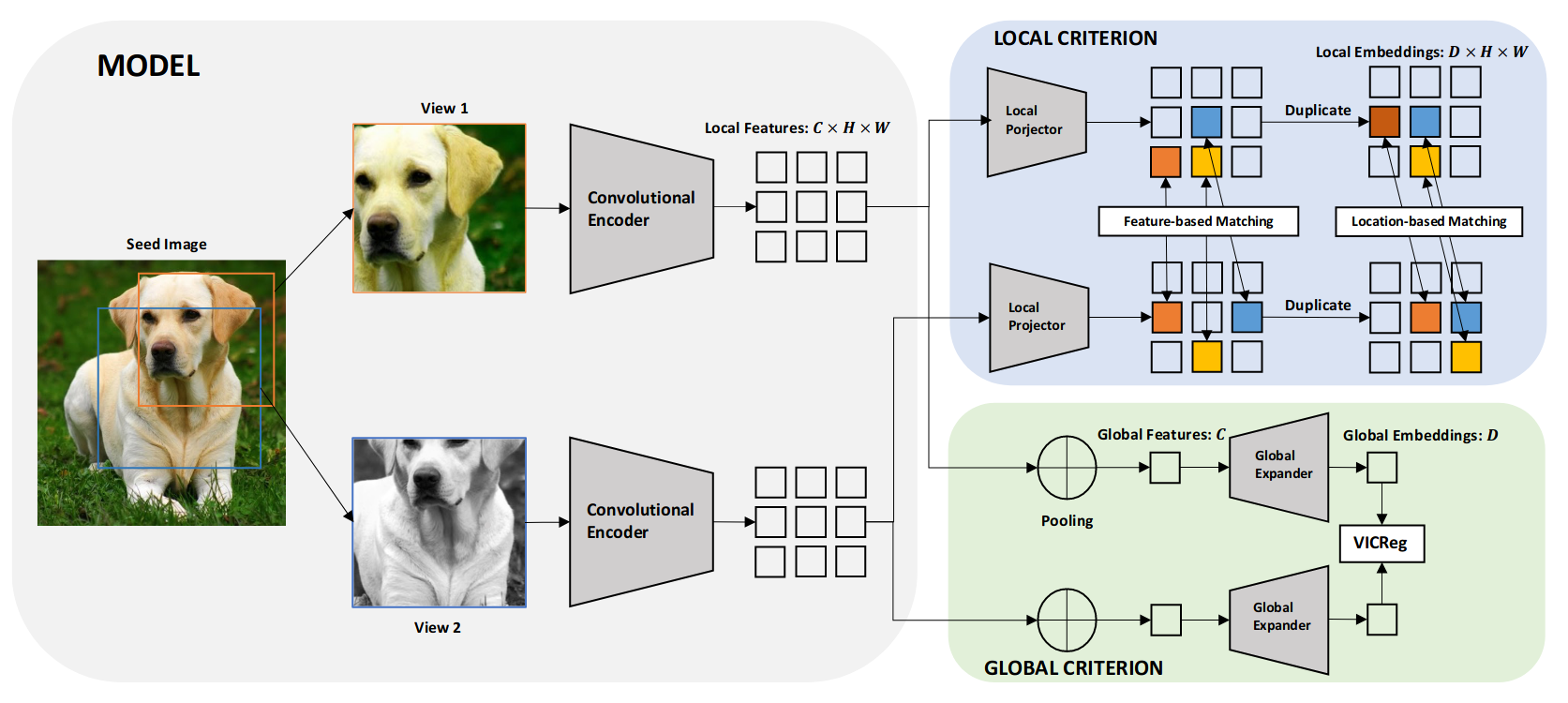A simple VICReg & VICRegL implementation
This project is a PyTorch implementation on the VICReg and the VICRegL. VICReg introduces a new contrastive loss that is decomposed in three parts:
- The invariance loss, to force the model to produce the same hidden representation between two embeddings of the same object.
- The variance loss, to force the model to diverse its representations between the embeddings of different objects.
- The covariance loss, to force the model to encode more information inside its hidden representations by decorrelating the representation dimensions.
The goal of this repository is to provide a simple and hackable implementation of this loss. That way it is easy to copy and paste the code into your own project.
Installation
Create your own virtual environment, and then install the package locally:
git clone https://github.com/jolibrain/vicreg-loss.git
cd vicreg-loss
pip install .Optionally, to install and run the tests:
pip install pytest
python3 -m pytest --import-mode importlibHow to use
The package provides two losses: VICRegLoss and VICRegLLoss, which
can be used similarly. Here's an example for VICRegLoss.
from vicreg_loss import VICReg
loss_fn = VICReg()
x_features = torch.randn(128, 32) # Shape of [batch_size, hidden_size].
y_features = torch.randn(128, 32)
# Returns a dict containing the different losses.
# The main one is `losses["loss"]`.
losses = loss_fn(x_features, y_features)VICReg
The standard VICReg applies the loss to the global representation of each images. It can be applied to any kind of model, as long as it provides a single latent representation for each input.
VICRegL
This version applies a combinaison of a global and local loss. The local loss is a VICReg loss but applied to specific patches of an image. Patches are first matched using a feature or a distance matching function. The global loss is the same loss as the standard VICReg.
This loss is useful if you have a model that output multiple latent representation for an image, such as a ViT. Each of these latent representation can be mapped to a specific patch location in the original image, allowing a patch matching between two version of the same image.
All credits go to the original paper and the official implementation:
- VICReg: https://arxiv.org/abs/2105.04906
- VICRegL: https://arxiv.org/abs/2210.01571
- Official VICReg implementation: https://github.com/facebookresearch/vicreg
- Official VICRegL implementation: https://github.com/facebookresearch/VICRegL

